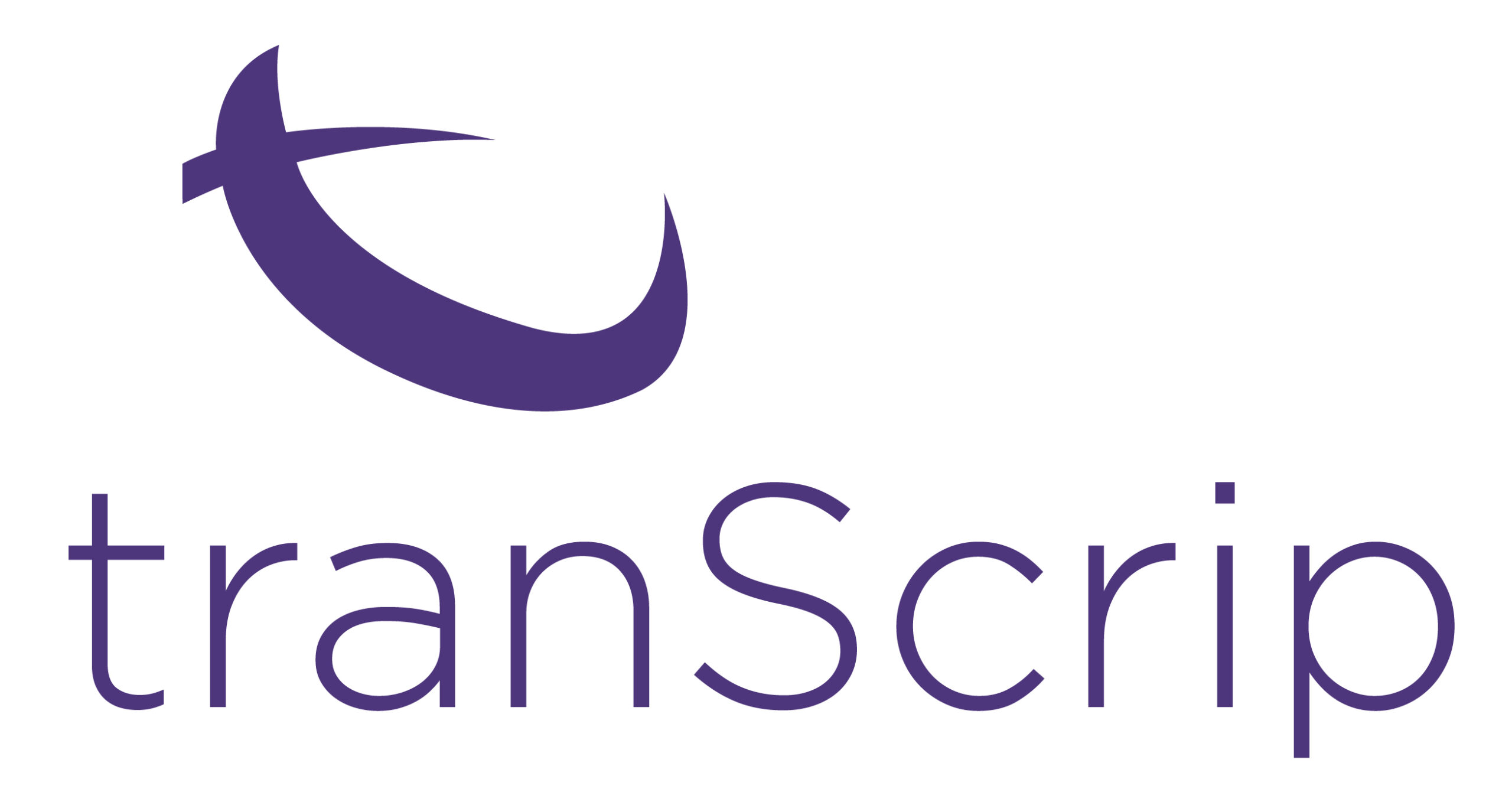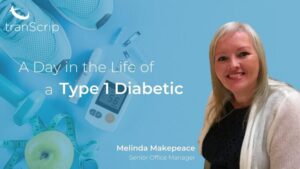
15 Nov 21
Yesterday marked #WorldDiabetesDay, a day for advocating awareness and action, an opportunity for us all to unite and promote the importance of taking coordinated action to confront diabetes as a critical global health issue.
This year’s theme is centred around ‘Access to Diabetes Care – if not now, when?’. The care needed isn’t just insulin or other medication but also access to self-monitoring, education and psychology support. However, with 4 out of 5 people living with diabetes coming from low-and-middle income countries, many are not able to access basic care and support.
In honour of World Diabetes Day, Melinda Makepeace, tranScrip’s Senior Office Manager, is sharing her experiences as a type 1 diabetic.

As someone who developed type 1 diabetes later in life, there was an adjustment period to go through. You are forced quickly to acclimatise to a change of routine, diet and lifestyle. Yet, the care I have been able to access has made a huge difference in making everything more manageable.
Developing type 1 diabetes later in life is very unusual however this is something that runs in my family, so I had some understanding of what to expect. At first, I was misdiagnosed with type 2 diabetes, which was resolved after routine blood tests revealed my glucose levels were higher then ever. Correct diagnosis is imperative for treatment and the way you manage diabetes. Luckily for me, I had a team of doctors working with me that spotted this diagnostic error early, which meant the correct treatment plan was quickly identified.
Managing my diabetes involves two different types of insulin; one being Basal which is a long-acting insulin and its role is to keep my glucose levels stable over a 24-hour period, the other is Bolus insulin which is a short acting insulin that you inject prior to consuming any carbohydrates. When you first think of carbohydrates your mind generally moves towards food like bread, pasta and potatoes – however being diabetic, you quickly learn carbohydrates are in almost everything we eat. Luckily bread, pasta and potatoes are still part of my day-to-day life because (let’s be honest) they are the best part of a meal!
Another lesson you learn quickly is how difficult it is to plan how much to inject, particularly in situations like an event or buffet meal where you might graze or eat multiple small plates. This is a real challenge for diabetics because you have to decide how much to inject prior to eating. It will never be an exact science and you have to make a judgement call, which can be overwhelming at the start of your diabetic journey. Over time you get used to having to inject small amounts when you decide to have a snack in the office. Many work colleagues have seen me turn away to inject into my thigh. I will happily inject for a sausage bap in the office!
Having to manage your insulin routine is not the only steep learning curve you have to handle when you are diagnosed with diabetes, you also have to remember to check your blood glucose levels regularly – something I wasn’t very good at until getting my Libre 2. “Since getting the Libre 2 I check my blood more regularly, sometimes more than 10 times a day”
Prior to getting my Libre 2, I was having to prick my fingers and test my blood 5+ times a day. Although pricking your finger isn’t painful, it isn’t an enjoyable experience and can be an inconvenience at times. It makes your fingers sore which makes you more reluctant to test your bloods later. In addition to sore fingers, you need to dispose of the needle and blood test appropriately, so you have to factor in whether there is a bin nearby. Having to plan your life around sore fingers and bins is a real pain and no fun for anyone.
Since getting the Libre 2 I check my blood more regularly, sometimes more than 10 times a day. It is extremely quick and painless to do. The Libre 2 flash monitoring system is a small round pad which sticks to the back of my arm and last for 2 weeks. To read my glucose levels, I simply use my iPhone and scan the pad on the back of my arm. It has completely transformed the way I manage my diabetes. The only thing I have to remember is to change the pad and to bring my phone everywhere I go, otherwise it emits a constant alarm to signal my Libre 2 is out of range. My daughter jokes that my phone has separation anxiety!
Learning how to manage diabetes is a complicated and non-linear process, which can be incredibly overwhelming at times. It is so important to have a strong support team around you. My hospital consultant is very supportive and always reminds me that I will never be able to control my diabetes, all I can do is try to ensure it doesn’t control me. The NHS have also sent me on a 4-day course (CHOICE) to learn how to count carbohydrates and calculate insulin. This educational support has been incredibly valuable in helping me to understand how to live a normal life with diabetes.
There is never a typical day as a diabetic but with access to care it is certainly manageable and easy to live a normal life. I think the best description of a day in the life of a diabetic would be scan Libre 2, inject, eat and repeat!
Our physicians, scientists and service experts can help to maximise the value of your products. Whatever your project requires, we have the people to meet your needs.